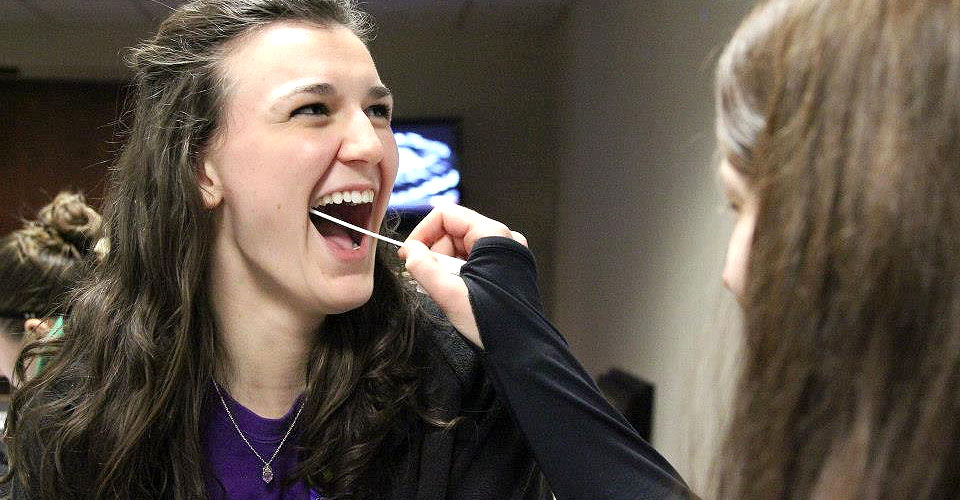

A quick swab of the cheek is all it took for 136 University of Wisconsin-Stevens Point students, faculty and staff as they registered for a chance to be a hero and save someone’s life at the UWSP Sports Medicine Club Be the Match bone marrow registry drive on Tuesday, March 19. [Photo Gallery]
The odds are one out of 542 people who sign up will be a match. Once on the registry, potential donors are on it until the age of 60 or until they request to be removed.
Learn more about Be the Match National Marrow Donor Program:
Q: What is a bone marrow transplant?
A: Bone marrow transplant is a life-saving treatment for people with blood cancers like leukemia and lymphoma, sickle cell and other life-threatening diseases. First, patients undergo chemotherapy and sometimes radiation to destroy their diseased marrow. Then a donor’s healthy blood-forming cells are given directly into the patient’s bloodstream, where they can begin to function and multiply.
For a patient’s body to accept these healthy cells, the patient needs a donor who is a close match. Seventy percent of patients do not have a donor in their family and depend on the Be The Match Registry to find an unrelated bone marrow donor or umbilical cord blood.
Q: Why is there a need for people to join the Be The Match Registry?
A: Thousands of patients with blood cancers like leukemia and lymphoma, sickle cell and other life-threatening diseases depend on the Be The Match Registry® to find a match to save their life.
Patients need donors who are a genetic match. Even with a registry of millions, many patients cannot find a match. Donors with diverse racial or ethnic backgrounds are especially needed. To learn more, see The Need for Donors.
Q: What is the donation process like?
A: Adult donors may be asked to donate in one of two ways:
- Bone marrow donation is a surgical procedure in which liquid marrow is withdrawn from the back of the donor’s pelvic bones using special, hollow needles. General or regional anesthesia is always used for this procedure, so donors feel no needle injections and no pain during marrow donation. Most donors feel some pain in their lower back for a few days afterwards.
- Peripheral blood cell (PBSC) donation involves removing a donor’s blood through a sterile needle in one arm. The blood is passed through a machine that separates out the cells used in transplants. The remaining blood is returned through the other arm.
For an overview of the donation process, see Steps of Bone Marrow & PBSC Donation.
